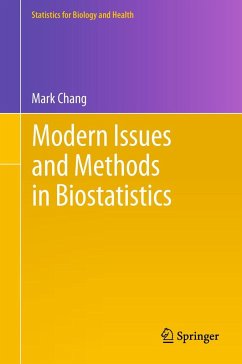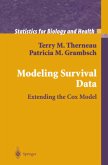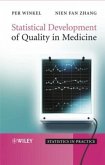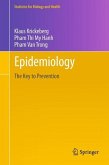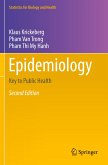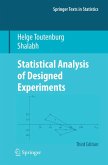Classic biostatistics, a branch of statistical science, has as its main focus the applications of statistics in public health, the life sciences, and the pharmaceutical industry. Modern biostatistics, beyond just a simple application of statistics, is a confluence of statistics and knowledge of multiple intertwined fields. The application demands, the advancements in computer technology, and the rapid growth of life science data (e.g., genomics data) have promoted the formation of modern biostatistics. There are at least three characteristics of modern biostatistics: (1) in-depth engagement in the application fields that require penetration of knowledge across several fields, (2) high-level complexity of data because they are longitudinal, incomplete, or latent because they are heterogeneous due to a mixture of data or experiment types, because of high-dimensionality, which may make meaningful reduction impossible, or because of extremely small or large size; and (3) dynamics, the speed of development in methodology and analyses, has to match the fast growth of data with a constantly changing face.
This book is written for researchers, biostatisticians/statisticians, and scientists who are interested in quantitative analyses. The goal is to introduce modern methods in biostatistics and help researchers and students quickly grasp key concepts and methods. Many methods can solve the same problem and many problems can be solved by the same method, which becomes apparent when those topics are discussed in this single volume.
This book is written for researchers, biostatisticians/statisticians, and scientists who are interested in quantitative analyses. The goal is to introduce modern methods in biostatistics and help researchers and students quickly grasp key concepts and methods. Many methods can solve the same problem and many problems can be solved by the same method, which becomes apparent when those topics are discussed in this single volume.
From the book reviews:
"There are 10 chapters, each one covering a major topic in biostatistics in about 30 pages. Each chapter is reasonably self-contained, so a reader does not necessarily need to read all prior chapters to understand a given one. ... this is a useful book for upper-level graduate students and Ph.D. statisticians." (Charles Heckler, Technometrics, Vol. 55 (1), February, 2013)
"This is a first class book. It discusses a wide range of deep issues in statistics, and although focused on topics arising in biostatistics, pharmaceuticals, and clinical trials it would make stimulating and thought-provoking reading for any statistician. ... There are exercises at the end of each chapter, and I am certainly tempted to use the book as the basis for a short course for beginning postgraduate students ... since it would open their eyes to some challenging and indeed fascinating aspects of modern statistics." (David J. Hand, International Statistical Review, Vol. 80 (1), 2012)
"There are 10 chapters, each one covering a major topic in biostatistics in about 30 pages. Each chapter is reasonably self-contained, so a reader does not necessarily need to read all prior chapters to understand a given one. ... this is a useful book for upper-level graduate students and Ph.D. statisticians." (Charles Heckler, Technometrics, Vol. 55 (1), February, 2013)
"This is a first class book. It discusses a wide range of deep issues in statistics, and although focused on topics arising in biostatistics, pharmaceuticals, and clinical trials it would make stimulating and thought-provoking reading for any statistician. ... There are exercises at the end of each chapter, and I am certainly tempted to use the book as the basis for a short course for beginning postgraduate students ... since it would open their eyes to some challenging and indeed fascinating aspects of modern statistics." (David J. Hand, International Statistical Review, Vol. 80 (1), 2012)
From the reviews: "This is a first class book. It discusses a wide range of deep issues in statistics, and although focused on topics arising in biostatistics, pharmaceuticals, and clinical trials it would make stimulating and thought-provoking reading for any statistician. ... There are exercises at the end of each chapter, and I am certainly tempted to use the book as the basis for a short course for beginning postgraduate students ... since it would open their eyes to some challenging and indeed fascinating aspects of modern statistics." (David J. Hand, International Statistical Review, Vol. 80 (1), 2012)

